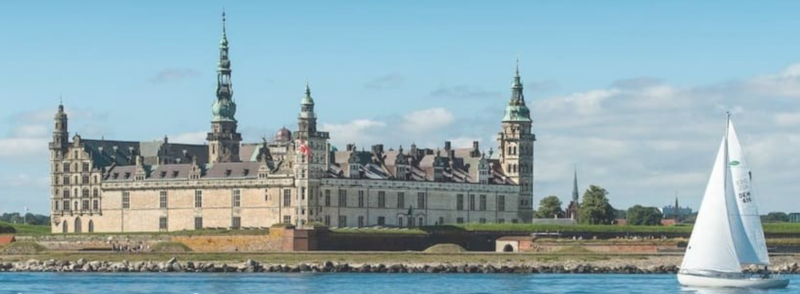The Baltic Region in Europe's Wars

Kronborg in Helsingør today – much more peaceful than in the early modern period, but still close to the waters of the Sound (Photo Thomas Rahbek - SLKE)
One much discussed characteristic of early modern warfare is change in technology. New gunpowder weapons, new artillery, and new warship styles were part of the wider change as discussed in the manifold research literature on the Military Revolution. These new technologies required belligerent parties all over Europe to have access to either raw, semi-finished, or finished war materials such as iron, saltpeter, gunpowder, pistols, bullets, or cannons. As with men and money, war materials were also accessed within the wider European context and not produced and used within the same polity. The planned book on The Baltic Region in European Warfare (The Northern World, Brill) takes a closer look at war materials at the moment they crossed the Øresund (or Sound), the only navigable way in or out of the Baltic.
While economic historians have studied Baltic commodities and made especially good use of the quantitative historical data available from the Soundtoll Registers (which survived without gaps from 1574 to 1857), the combination with the ebbs and flows of European warfare has so far not been addressed. The study will for the first time analyse the quantitative data available in the Soundtoll Registers (and now freely available through Soundtoll Registers Online), providing answers to the question of how much war materials from the Baltic were used on European battlefields. In addition to the well-known importance of naval stores, ammunition and artillery from the Baltic region could be found throughout European armies.
Due to the unique geography of the Sound as the only navigable strait into and out of the Baltic Sea, at least for the bulky commodities we’re talking about here, competition between various powers trying to access trading partners was high. So high, that they became causes of war in the seventeenth century as well as bringing everyone to the negotiating table to agree on peace. Until 1658, Denmark-Norway had full control over both sides of the Sound. The smallest part of the Sound, between Helsingør on Zealand and Helsingborg in Scania, is just about 4 kilometres - a ship going through this part was well within reach of cannons from either side. Even after 1658, when Denmark-Norway lost Helsingborg to Sweden, the Soundtoll was kept and each ship passing it had to pay into the Danish king’s coffer. The toll was determined by the value of the cargo, and since the 1630s, the cargo was noted regularly in the toll books - allowing historians to understand Baltic trade both from a macro- and a micro-perspective. More about this source here: https://fiscalmilitary.history.ox.ac.uk/article/having-fun-unique-source-sound-toll-registers-online.

An early modern Danish cannon, now displayed in the War Museum in Copenhagen (photo C. Sarti)
This book discusses the role of the Baltic in the European military economy, focussing on transnational connections which supported warfare inside and outside the region. It argues for a broader perspective on procuring war resources, detached from national views. I bring forward the notion that regions with established economic, social, or political networks and hubs provided the necessary infrastructure for supplying armed conflicts. Such a regional structure was accessed by various political entities, in their roles as customers, as mediators, and as suppliers. Actors within such a regional structure were able to operate on behalf of different political entities, and, moreover, could provide transnational connections for powers to engage with each other outside of more formalized diplomatic interactions. Using a consistent regional perspective on the Baltic as a whole allows for a supra-national analysis, and for the discussion of the impact of a region on the European fiscal-military system. This perspective emphasizes the spatiality of the region and its various hubs, challenging the national focus of older state formation literature.
One goal of this book is to connect economic history with history of war. In both fields, competition is a key term, and this study therefore asks both about the competition for Baltic war materials between different market players (armies) and between different markets (wars). This is even more important as the Baltic itself was a region of constant warfare in the early modern period but nonetheless tried to be kept out of Western European wars. Churchill, the Duke of Marlborough, famously visited Karl XII of Sweden after the latter had defeated Denmark, Russia, and Saxony in the first phase of the Great Northern War, to ensure that Karl would turn eastwards instead of coming into the Holy Roman Empire and thereby mixing the Great Northern War with the War of the Spanish Succession. It seems as if contemporaries were very well aware of the role of the Baltic in European warfare.
Cathleen Sarti was Research Associate for The European Fiscal-Military System 1530 - 1870 and focused on the Baltic case study. She is now Departmental Lecturer in Early Modern History at the University of Oxford.


